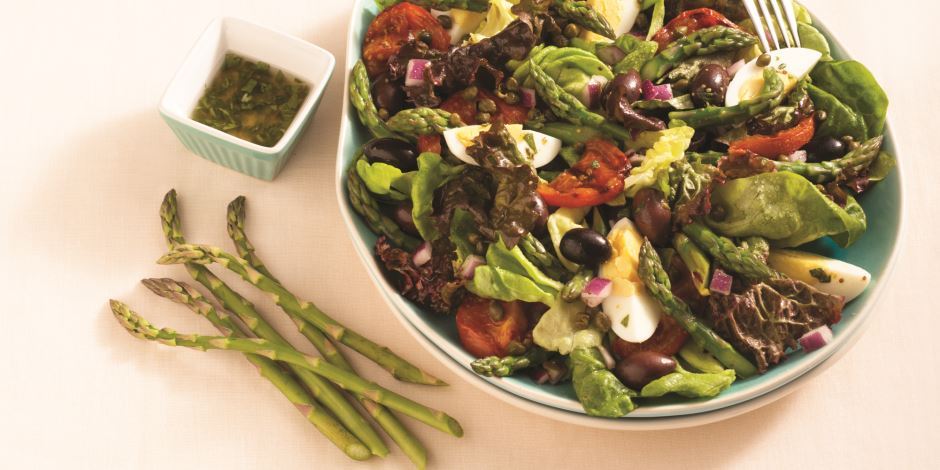Loaded with antioxidants such as vitamins A, C and E, asparagus is a free-radical fighter with very few calories, no fat and a lot of fiber. We love it not only for its high nutritional value but also for its colorful, exotic look that dresses up even simple dishes.

BUY IT: Although you can find imported asparagus most of the year, it is in season and at its peak March through June in the United States. The spears come in a variety of diameters; all of them are delicious—it’s a common misconception that the thickness of the stalks determines their taste or quality. Usually sold in 1-pound bunches, asparagus stalks should be straight, firm and bright green. Look for spears with bright-purple tips that are closed and compact—like a paintbrush loaded with paint.
STORE IT: According to the California Asparagus Commission, asparagus keeps best when set upright in a container with an inch or so of water and placed in the refrigerator. It can also be frozen for up to three months: Blanch the stalks first, pat them dry, lay them so they’re not touching on a cookie sheet, and place the cookie sheet in the freezer. Once they’re frozen, transfer the stalks to a plastic bag.
PREP IT: Snap or trim a half-inch off the bottom of the stalks before cooking them. The woody ends aren’t good for eating, but they’re great for soups and vegetable stocks. Boil until tender, steam, roast or grill the spears, but keep your preparation simple—olive oil, balsamic vinegar and spices, lemon juice, grated orange peel, or a light cream sauce complement without distracting from the natural, rich flavor of asparagus. Or cut the spears into quarter- or half-inch pieces and add them to salads, pastas, casseroles and stir-fries.
Lightly steamed asparagus is a flavorful addition to a lively spring salad. Try our recipe for Chopped Asparagus Nicoise Salad.
The Full Spectrum
White asparagus—which comes from the same plant as the green variety—is colorless because it is grown under a blanket of dirt and is never exposed to sunlight, which causes the pigmentation. Purple asparagus is a different variety that has a sweeter flavor, and its color comes from high levels of the antioxidant anthocyanin.
Try Asparagus Scones for breakfast! Click here for the recipe.
Photography by Annette Slade

